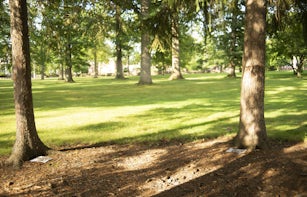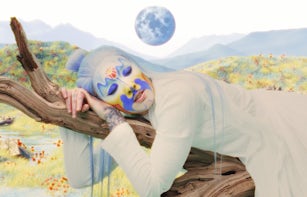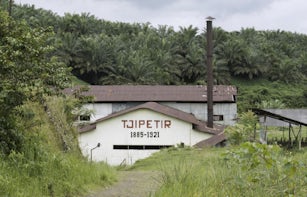The videotapes Juan Downey made during the time he and his family spent with the Yanomami in the late 1970s are marked by contradictions. The project is animated by a utopian belief in technology as a tool for social change, although the complex realities of Indigenous life are at times eclipsed by the artist’s longing for authenticity. Downey recounts mythical Yanomami tales with the authority of an insider yet ends up being the butt of the joke, as villagers laugh at his blunders. Alternately dramatising and under-mining primitivist desire, then, his work remains entangled with the ethnographic paradigm that it seeks to critique – a burden that contemporary approaches to Indigenous self-representation have decisively shrugged off. Four decades later, while noting the limitations of this model of collaboration, we might recognise the prescience of the question at the heart of Downey’s work: how can video technology serve as an interface to articulate relational identities in an interconnected world? — HV

Juan Downey was an upper-middle-class Chilean intellectual who, like most South American intellectuals at the time, felt strong links with Europe and had sympathies for Cuba. Not surprisingly, upon graduating as an architect in 1961, he left Santiago for Madrid, Barcelona and later Paris, and only somewhat reluctantly did he accept, in 1965, an invitation to go to the United States, where he might have been surprised to be considered Latin American. Upon his arrival in Washington DC, he experimented with all kinds of technologies – from robots to radio waves and photo-electric cells – to create interactive installations and performances, which attempted to visualise the systems of energy that, although invisible to the naked eye, define our physical, emotional and ideological environments. Developed for the US iteration of the landmark exhibition ‘Cybernetic Serendipity’, With Energy Beyond These Walls: A System of Two Sculptures (1969), for example, stages a dialogue between two sculptures and the urban environment outside the gallery: a roughly anthropomorphic, boxy, white sculpture equipped with sensors translates different sources of energy such as heat or radio waves into musical tones, which are, in turn, broadcast by an amplifier. 01 As Downey began to experiment with time-based media such as dance and video, a technology that was just becoming available to artists at the time, personal interaction with these systems of energy became in-creasingly pivotal to his work. In Invisible Energy Dictates a Dance Concert (1969), five dancers responded to the music created by sensors placed near the Smithsonian in Washington, whilst in Energy Fields (1972), which he developed after relocating to New York in 1969, a group of dancers interacted with ultrasonic waves in the gallery space so as to render this energy field visible with their movements.02

If these works helped make the gallery walls porous to the outside world, Downey’s experimentation with the feedback capacity of video led him to focus on collective forms of spiritual, emotional and psychological energy. In Three Way Communication by Light (1972), three performers are each placed at the vertex of a triangle, their faces painted white to become the screen upon which the pre-recorded footage of another performer’s portrait is projected. A small mirror shows them their transformation, while a video monitor plays it back to the audience after the performance is over. At the same time, a laser beam projects yet another performer’s voice, furthering the confusion between the three selves. The idea of transfiguration is taken up again in Plato Now(1973), in which nine performers are sat in a line, all facing the gallery wall, and are submerged in meditation, as they listen to pre-recorded selections of Plato’s dialogues on headphones. The recurrence of the quotes is regulated by their alpha waves, or brain signals produced during intense states of relaxation, detected by headsets of electrodes. As in Three Way Communication by Light, a closed-circuit television system records the performers’ transformed faces, broadcasting them to video monitors placed behind their backs. Here, however, viewers are not mere observers: their shadows are projected onto the wall faced by the meditators, akin to the passing shadows that comprise ‘the prison-house [of] the world of sight’ in Plato’s allegory of the cave. 03 In Downey’s attention to invisible forms of energy we can recognise a similar critique of the dominance of vision, but one that differs radically from Plato’s idealism: Downey’s enquiry sought to explore forms of perception and communication that overcame both vision and language – forms that the artist envisaged as ‘direct and free exchange of information more similar to the exercise of telepathy than to the cumbersome TV box’.04 Liberation, Plato Now seems to suggest, will not come from a distanced reflection upon the world but rather from a deeper engagement with our inner selves; it is meditation rather than rational thought that may help the performers-cum-prisoners break the chains of ignorance.
Downey’s enquiry into the transformation of the self can be seen against the backdrop of his preoccupation with his personal identity as a Chilean expatriate living in the US. Allusions to his home country recur in his work of the period: from the unrealised project Invisible Energy in Chile Plays a Concert in New York (1969), which aimed to connect the urban environments of Santiago and New York via satellite technology, arguably ‘an exhortation … “to face the music” from Chile … [in] reference to the election of Salvador Allende’, 05 to a series of works around the natural fertiliser Chilean nitrate, realised in 1971, in which his interest in ecological systems dovetails with his critique of US chemical corporations. Perhaps seized by the desire to ‘recover’ his South American roots, in the early 1970s he began to imagine the plot for a road movie of sorts, in which he would travel from the northernmost to the southernmost point in the Americas, recording footage of different forms of living and mythologies practised across the continent. In the spring of 1973, he writes:
This automobile trip was designed to develop an encompassing perspective amongst the various populations which today inhabit the American continents, by means of a videotaped account, from the northern cold forest to the southern tip of the Americas – a form of evolution in space while infolding time, playing back one culture in the context of another as well as the culture itself in its own context, and finally editing all the interactions of space, time and context into a work of art.06
Although Video Trans Americas (1973–76) ended up focussing almost exclusively on Central and South America, the project retains many of the features of this envisaged road movie. Between the summers of 1973 and 1974, Downey undertook four separate trips to Mexico and Guatemala; Texas; Peru and Bolivia; and Chile, often accompanied by his family. The video diaries of these trips were later edited in several tapes, each associated with a specific region or locality. 07 The contents of the videos range from views of pre-Columbian architecture to images of everyday life, folk music and artisanal traditions, but their editing places them apart from the observational point of view commonly associated with ethnographic documentaries: the camera movements, at times seemingly random, and the unconventional editing, often working upon the idea of cyclical reiteration, signal the artist’s effort not so much to understand another reality as to partake in a certain cadence of life. Occasional voice-overs, often readings from Downey’s diaries, further situate the videos within the artist’s personal enquiry. The two-channel video Uros 1 & 2 (1975), for example, in which Downey compares the Inca ruins that he visited near Cuzco, Peru, with the temporary dwellings built by the Uros – pre-Incan peoples who live in self-fashioned, floating islands on Lake Titicaca, on the border between Peru and Bolivia – reveals his process of self-questioning as the journey was nearing its end:
Like a chemical catalyst I expected to remain identical after my video exchange had enlightened many American peoples by the cross-references of their cultures. I proved to be a false catalyst when I was devoured by the effervescence of myths of nature and language … Only then I grew creative and in manifold directions. Me, the agent of change, using video to decode my own roots. I was forever deciphered and became a true offspring of my soil, less intellectual and more poetic.08




